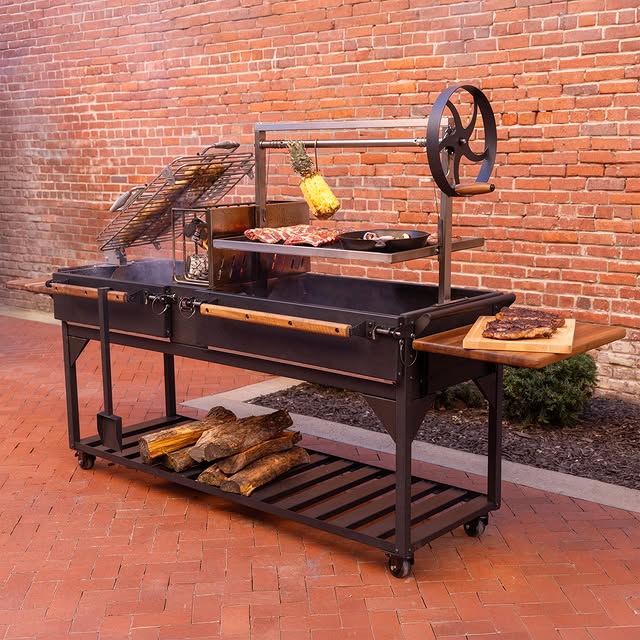The World’s a Hot Grill – Literally
Every culture has its own way of worshipping the flame.
Some use open fires, others use clay ovens, a few use steel monsters that look like jet engines – but it’s all about the same thing: food, fire, and flavor.
While your average backyard cookout runs on a simple gas grill, pitmasters across the globe are firing up some of the most unique grills ever built – each one a reflection of local tradition, engineering, and taste.
From the precision of a Japanese Kamado to the drama of an Argentine Parrilla, this list isn’t just about cool gear. It’s about discovering how the world grills – and which style might just change the way you cook forever.
How We Picked These Grills
I didn’t just throw darts at a map.
Each grill here earned its place based on authenticity, design, performance, and story.
We looked for grills that:
- Represent real regional traditions
- Offer a distinct cooking experience
- Deliver great heat control and flavor
- Have a modern version available for backyard use
This is a world tour offirecraft, handpicked by someone who’s spent more weekends around smoke than sunlight.
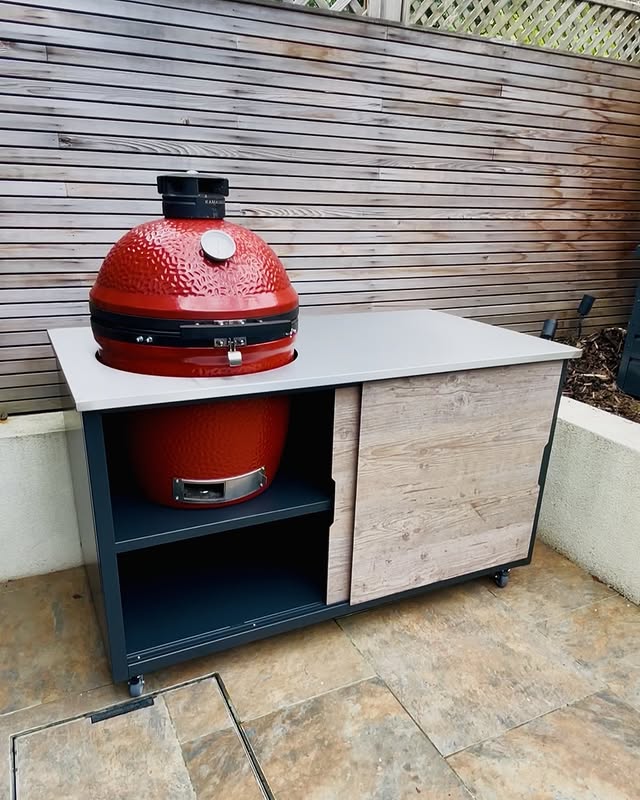
1. Kamado (Japan)
If grills had monks, the Kamadowould be the Zen master.
Born from ancient clay cookers in Japan, the Kamado design focuses on heat retention and balance. The thick ceramic walls trap heat like a furnace, holding temperatures steady for hours. Perfect for slow-smoking pork shoulders or crisping pizzas at 700°F.
Modern versions like the Big Green Egg and Kamado Joe have turned the Kamado into a backyard legend.
Best for: Low-and-slow cooks and high-heat searing.
Fuel: Lump charcoal.
Flavor profile: Clean, subtle, and woodsy.
Key takeaway:A Kamado rewards patience. It’s a grill for precision artists who enjoy mastering temperature like a musician tuning strings.
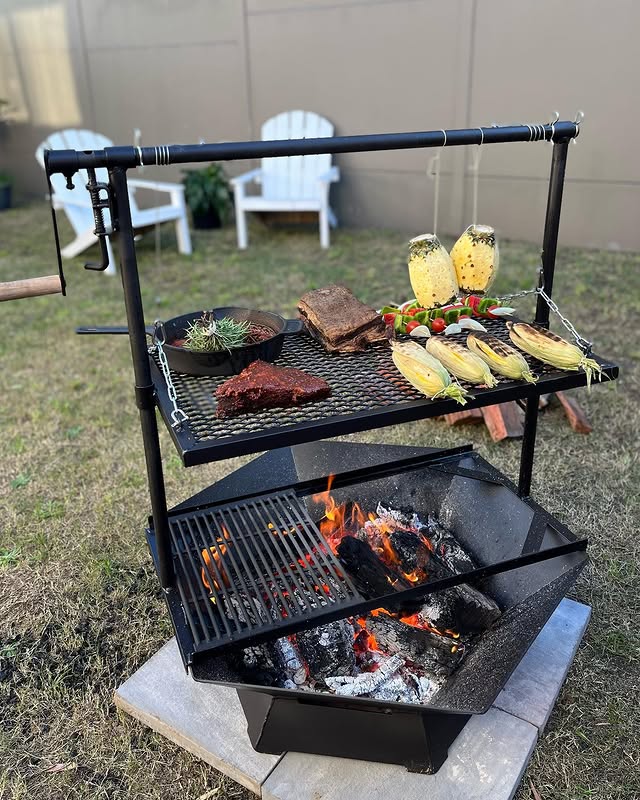
2. Parrilla (Argentina)
Argentina’s national obsession isn’t soccer – it’s asado, and the Parrilla Grill is its stage.
The design is simple: a large open grate over glowing wood embers, with an adjustable height mechanism that lets you raise or lower the meat to control heat.
It’s pure, primal grilling – no lid, no gimmicks, just smoke and skill.
Best for: Beef ribs, steak, and sausages.
Fuel: Hardwood embers.
Flavor profile: Bold, meaty, smoky, with a kiss of wood.
Key takeaway:The Parrilla is for those who believe in tending fire by hand – the kind of grill that demands your attention, and pays you back in flavor.
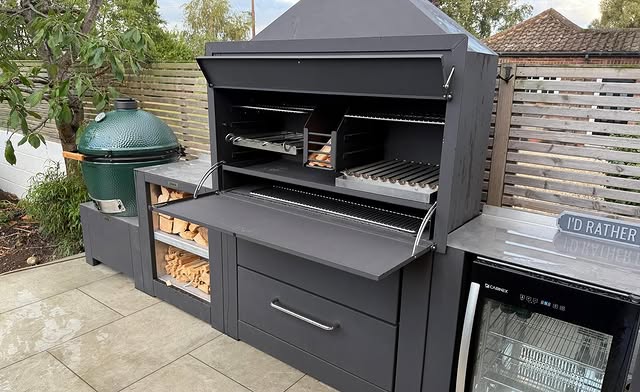
3. Braai (South Africa)
In South Africa, “let’s have a Braai” means let’s gather.
It’s not just a grill – it’s a way of life.
A Braai setup is typically a stone or metal pit that burns wood first, charcoal later. The flavor is deep, rustic, and distinctly African.
What makes it special is the social ritual: cooking isn’t the point – community is.
Best for: Steak, lamb chops, and boerewors (sausage).
Fuel: Hardwood or lump charcoal.
Flavor profile: Smoky, strong, and slightly wild.
Key takeaway:The Braai isn’t just about cooking – it’s about connection. If you’re grilling for friends, you’re doing it right.
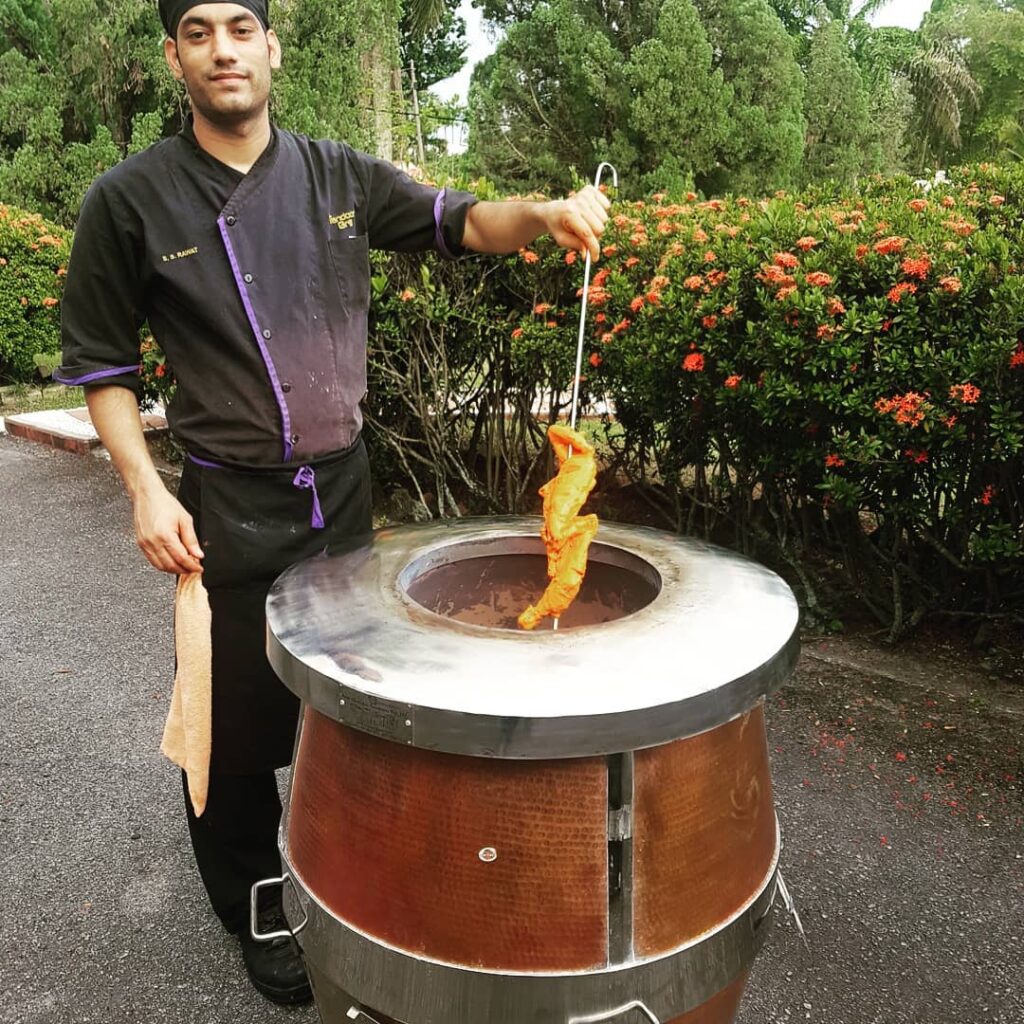
4. Tandoor (India)
The Tandoor is both ancient and intense.
It’s a cylindrical clay oven that gets so hot, you could melt metal in it (up to 900°F). Food cooks vertically inside, with juices dripping into the fire for that signature smoky edge.
This is how tandoori chicken, naan, and kebabs get their trademark flavor – charred on the outside, juicy inside.
Modern versions come as stainless-steel tandoors for backyard cooks who want that authentic touch.
Best for: Skewered meats, naan, and flatbreads.
Fuel: Charcoal or wood.
Flavor profile: Charred, spicy, aromatic.
Key takeaway:For those who love big heat and bold spice – the Tandoor is flavor intensity in a barrel.
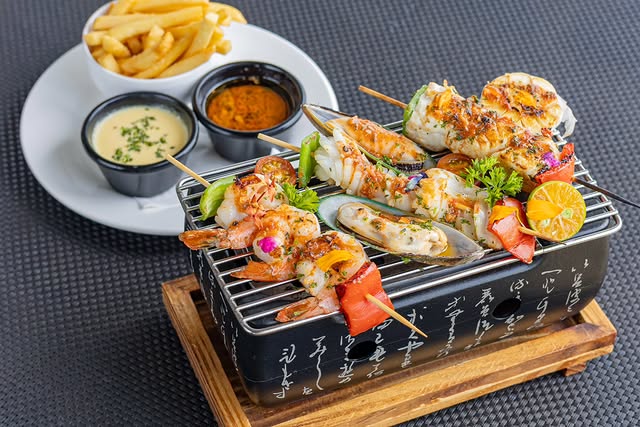
5. Hibachi (Japan)
If minimalism had a grill, it’d be the Hibachi.
Small, sturdy, and made of cast iron, this Japanese classic is perfect for tabletop grilling or tight urban patios.
It heats up quickly, stays hot, and puts you right next to the action. Modern hibachis are sleek, portable, and ideal for yakitori, seafood, and veggies.
Best for: Small portions, skewers, and quick cooking.
Fuel: Charcoal (binchotan for purists).
Flavor profile: Clean heat with crisp char.
Key takeaway:Compact but mighty. The Hibachi is proof you don’t need a backyard to master the flame.
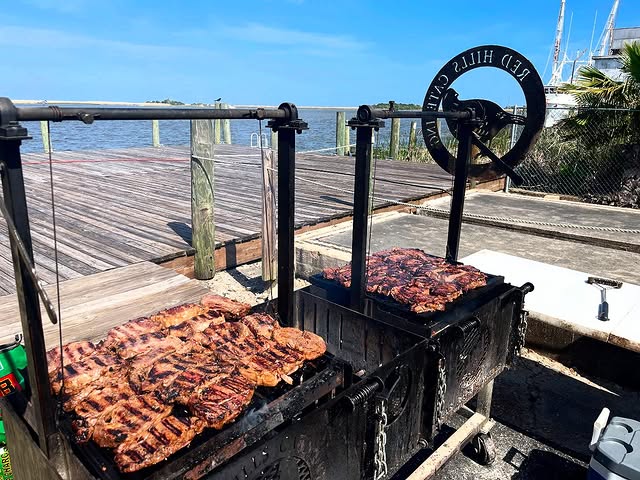
6. Santa Maria Grill (California, USA)
Born on California’s Central Coast, the Santa Maria grill was made for ranchers feeding crowds of hungry cowboys.
It’s built around a crank-operated grate that moves up and down over an open wood fire. That means perfect control for thick tri-tip, ribs, or chicken.
It’s part performance, part precision tool.
Best for: Tri-tip, ribs, and steaks.
Fuel: Red oak or lump charcoal.
Flavor profile: Deep, campfire-style smoke.
Key takeaway:For the pitmaster who likes a little showmanship with their sear.
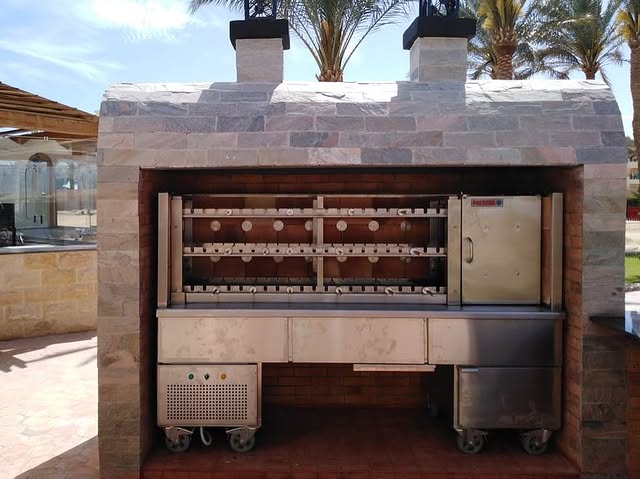
7. Churrasco Grill (Brazil)
Brazilian steakhouses didn’t invent Churrasco– they just made it famous.
These rotisserie-style grills let you cook multiple skewers of meat simultaneously, slowly rotating over charcoal.
The result? Juicy cuts with that caramelized crust you can’t fake.
Backyard versions bring the restaurant experience home, complete with vertical skewer racks.
Best for: Picanha, sausage, and skewered meats.
Fuel: Charcoal.
Flavor profile: Balanced, juicy, rich.
Key takeaway:If you like feeding a crowd, Churrascois your ticket to all-you-can-eat glory.
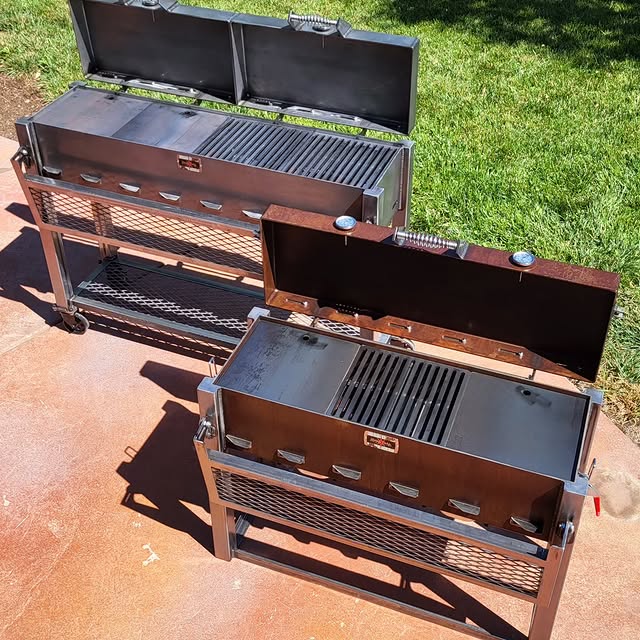
8. Mangal (Middle East, Caucasus, Central Asia)
The Mangal is a masterclass in simplicity.
Picture a rectangular metal box filled with hot coals and a row of skewers resting across the top – that’s it.
It’s used across Turkey, Armenia, and Central Asia for kebabs, lamb, and vegetables. What makes it special is even heat and portability – you can set it up anywhere and be grilling in minutes.
Best for: Shish kebabs, vegetables, fish.
Fuel: Charcoal.
Flavor profile: Light smoke, clean char.
Key takeaway:Simple, efficient, and fuss-free. The Mangal is the everyday workhorse of the grilling world.
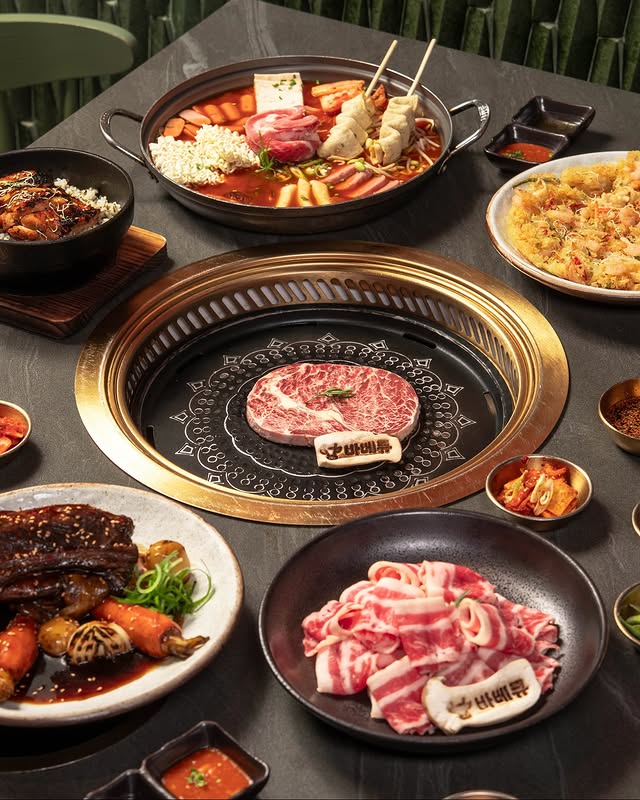
9. Korean BBQ Grill (Korea)
Few experiences match Korean BBQ – sizzling meat at the table while everyone eats, cooks, and laughs at once.
Traditional Korean BBQ uses small charcoal or gas grills built right into tables. The focus is on thinly sliced meats, marinated in sweet-salty sauces, cooked fast, and eaten instantly.
Home versions are now available as electric or gas tabletop grills that capture the same fun.
Best for: Bulgogi, pork belly, short ribs.
Fuel: Charcoal, gas, or electric.
Flavor profile: Sweet, smoky, and interactive.
Key takeaway:Perfect for social eaters – it’s not just cooking, it’s conversation.
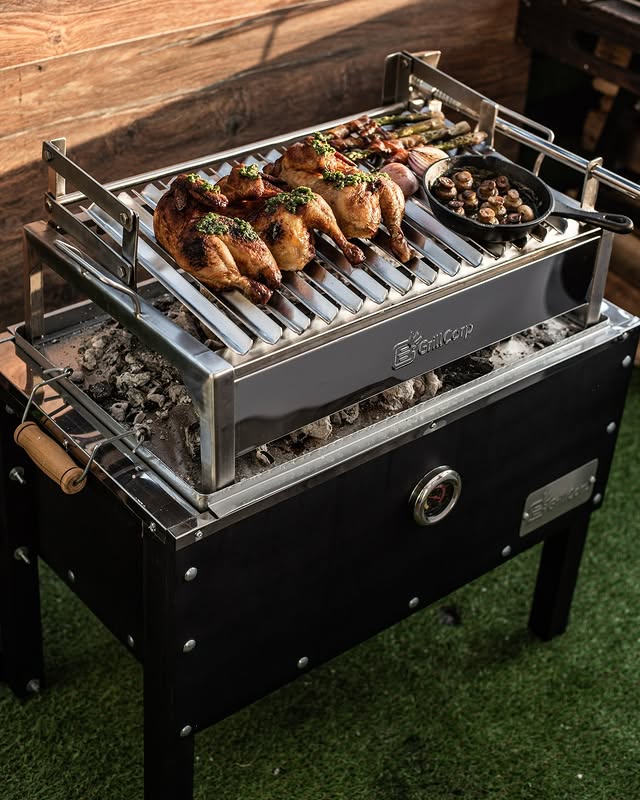
10. Caja China (Cuba)
The Caja China looks like a wooden box, but it hides a fiery secret.
It’s designed to roast whole pigs (lechón) or large meats by placing coals on top of the box, radiating heat downward.
Think of it as a portable oven-meets-grill hybrid.
The results? Crispy skin, tender meat, and instant crowd envy.
Best for: Whole pigs, ribs, turkey.
Fuel: Charcoal on the lid.
Flavor profile: Even heat, slow roast, smoky aroma.
Key takeaway:For pitmasters who love drama and big gatherings – the Caja China turns barbecue into theater.
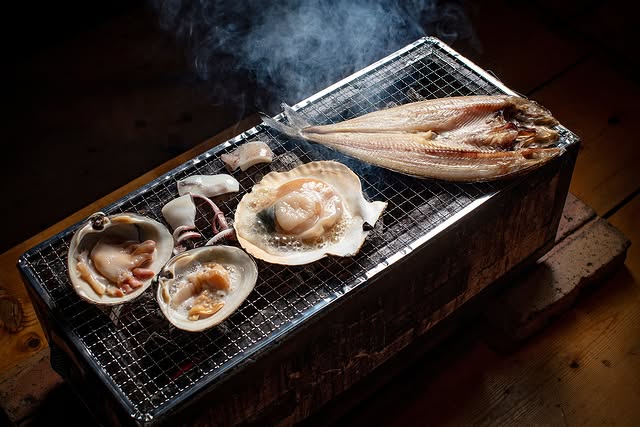
11. Shichirin (Japan)
Tiny but mighty, the Shichirin is a traditional Japanese clay grill that uses ultra-clean binchotan charcoal.
It’s incredibly efficient and often used in sushi restaurants for finishing delicate dishes.
If you love precision – perfect sears on small pieces – this is your grill.
Best for: Yakitori, scallops, wagyu slices.
Fuel: Binchotan charcoal.
Flavor profile: Pure, refined, minimal smoke.
Key takeaway:For control freaks in the best way possible – every flick of flame matters.
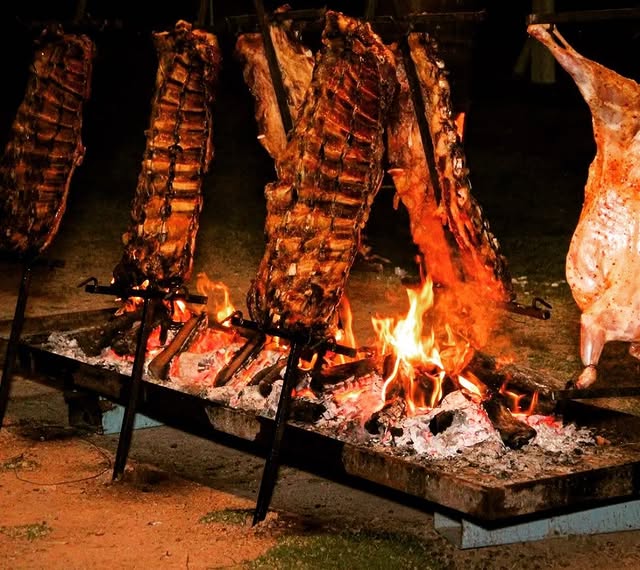
12. Asador Cruz (Patagonia, Argentina)
We end where fire meets art.
The Asador Cruz is a vertical iron cross used to cook whole animals over an open flame – the most primal and awe-inspiring form of barbecue you’ll ever see.
Picture a lamb or goat spread across the cross, slowly roasting for hours while you sip wine and watch the sun drop behind the Andes.
Best for: Whole lamb, goat, or large cuts.
Fuel: Wood fire.
Flavor profile: Smoky, earthy, ancient.
Key takeaway:For those who see grilling as a ritual, not a recipe.
Global Grill Styles Compared
| Region | Grill Type | Fuel | Best For | Vibe |
| Japan | Kamado, Hibachi, Shichirin | Charcoal | Precision & balance | Minimalist mastery |
| Argentina | Parrilla, Asador Cruz | Wood | Beef & spectacle | Social & primal |
| India | Tandoor | Charcoal | Bread & kebabs | Fiery & flavorful |
| South Africa | Braai | Wood | Gatherings | Communal & rustic |
| Brazil | Churrasco | Charcoal | Rotisserie meats | Festive & abundant |
| Cuba | Caja China | Charcoal | Whole roasts | Celebration cooking |
What to Consider Before Buying One
Before you import a 300-pound grill from across the world, think through the details.
Ask yourself:
- Space: Some, like the Parrilla or Caja China, need serious room.
- Fuel: Will you have access to the right charcoal or wood?
- Cooking style: Do you grill weekly, or host big gatherings?
- Learning curve: Some grills (Kamado, Tandoor) take practice.
- Maintenance: How easy is cleanup and ash disposal?
Pro tip:The right grill fits your fire style – not the other way around.
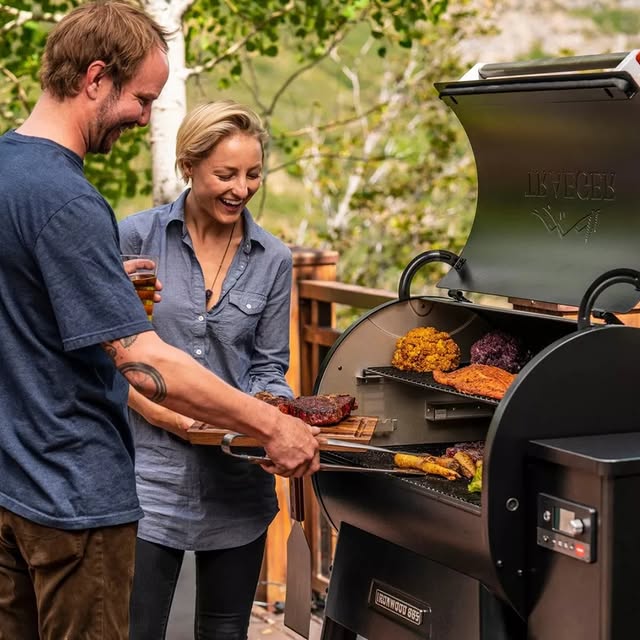
Expert Tips for Global Grilling
- Respect the tradition. Every design exists for a reason – learn it.
- Use the right wood. Oak for beef, fruitwood for poultry, citrus for fish.
- Start small. Master skewers before attempting whole animals.
- Don’t rush the fire. Every pitmaster knows: heat control is half the craft.
- Experiment globally. Try naan in a kamado, kebabs on a Santa Maria – break borders, keep the flavor.
Every Flame Tells a Story
So, which of these unique grills should you fire up first?
If you crave precision and control, go Kamado.
If you love drama and tradition, the Parrilla or Asador Cruz will speak to you.
For social, casual cooking, Korean BBQ or a Braai brings everyone together.
Whatever you choose, remember this: great barbecue isn’t about gear – it’s about mastering the flame.
Because across every country and every culture, fire connects us all.
And once you’ve cooked on one of these grills, you’ll never look at “just grilling” the same way again.
Now, go light something worth tasting.
Featured image credit: @backyarddiscovery

